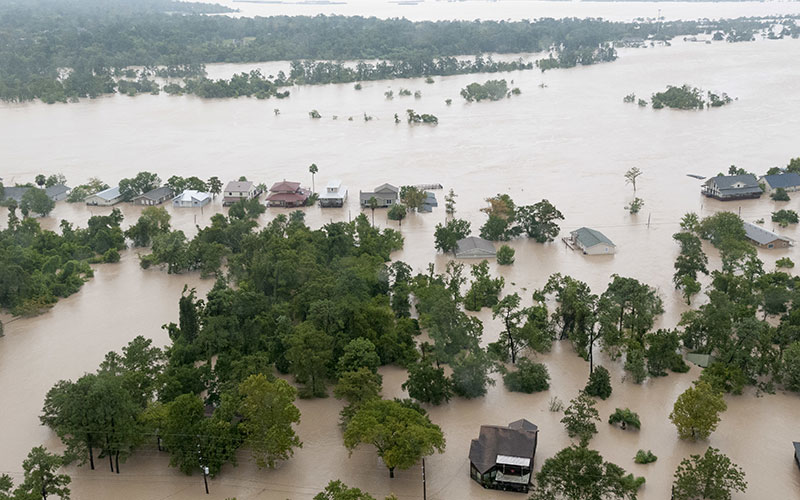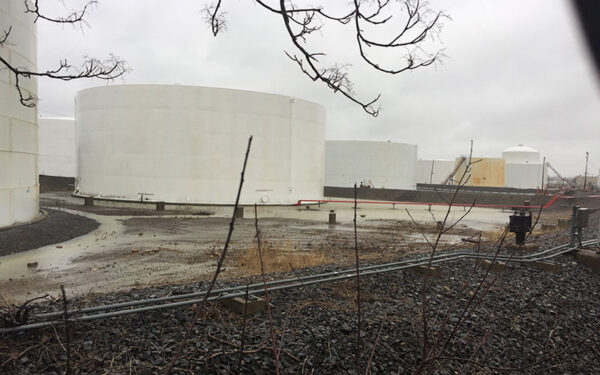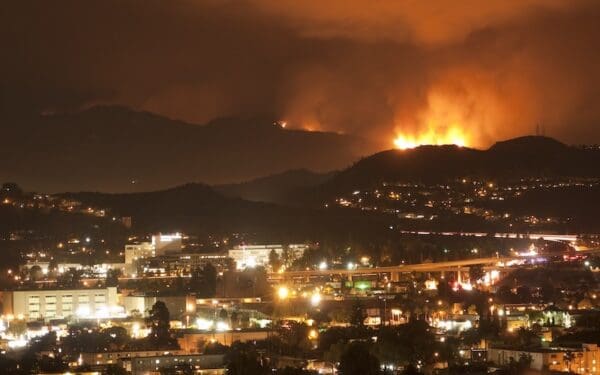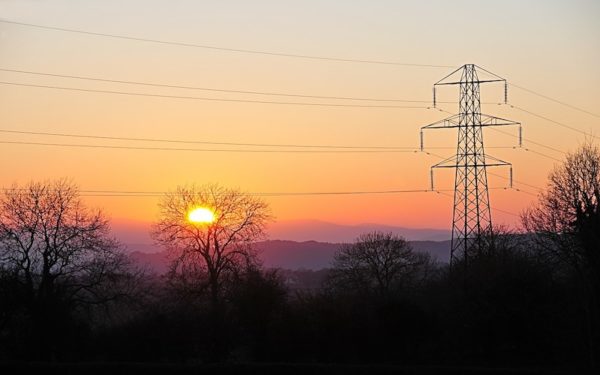
Hurricane Harvey caused billions in damage and displaced thousands of people. We shouldn't wait for a disaster to hit Massachusetts before acting to reduce flood risks here. Photo: AMF Photography / Shutterstock.com
Update (August 9, 2021): The Massachusetts Board of Building Regulations and Standards sets building codes for the entire Commonwealth. On Tuesday, August 10, the Board will hear CLF’s proposal to strengthen building codes to address the realities of climate change impacts.
Superstorm Sandy and Hurricane Harvey devasted the communities in their paths. Billions of dollars in property were lost. What’s more, thousands of residents found themselves displaced from damaged homes and apartment buildings, leading to greater stress and financial loss.
In the aftermath of these disasters, regulators acted to better prepare the affected communities for future storms and hurricanes by increasing elevation requirements and standards for floodproofing. But what if those standards had been changed before disaster struck? In Houston, for example, 84% of homes would not have flooded if they had been built to the standards the City created after Hurricane Harvey. And for homes that did experience flooding, those that were elevated higher avoided, on average, $21,000 in damage per parcel, an amount that would be life-altering for many families.
Here in Massachusetts, climate change is already bringing more severe and frequent storms. But we are no better prepared than Houston before Harvey struck. Despite knowing the risks, state regulators have failed to require new homes and businesses be built with climate impacts in mind.
CLF is working to change that. We are pushing the Commonwealth to update its building code to account for known climate risks so that no family or business gets left, quite literally, underwater.
Massachusetts Building Codes Rely on Outdated Data – That’s a Problem
Over the last five years, about 17,000 new homes have been built every year in Massachusetts – not to mention billions of dollars worth of new commercial construction. From apartment buildings to single-family homes, each new building that goes up will experience the effects of increased flooding, precipitation, and storms. Even within the span of a 30-year mortgage, the risks faced by any new housing built today stand to increase significantly.
These same risks apply to other structures, as well: commercial buildings where small businesses are based, industrial facilities where essential functions are carried out, and critical facilities such as hospitals and other emergency response services.
Yet all of the state’s newest homes and other structures have been built based on outdated assessments of flooding and other risks. Our state building code relies on FEMA floodplain maps, which only look at past flood data and do not consider the increased risks posed by climate change. In addition, the current code does not allow cities and towns to use their own flood maps and projections or impose stricter floodproofing standards.
As a result, there is a mismatch between the types of risks the Commonwealth currently faces and the data that building officials have available when permitting new construction.
The Data Is Clear: Increased Flood Risks Are Here Now and Will Only Get Worse
We know that climate impacts are imminent, and their burdens will fall heaviest on low-income property owners and tenants living in buildings unprepared for these flood risks. Regardless of how well we can reduce climate-damaging emissions, increased flooding and storms are already being experienced by Commonwealth residents and will only increase in the future:
- Flood maps show that approximately 321,488 properties are already at risk in Massachusetts and that figure will dramatically increase in coming decades. In Boston alone, sea level rise of 36 inches by 2050 could damage assets worth an estimated $1.1 billion.
- Heavy precipitation (days with greater than 1 inch of rainfall) could increase between 10% to 42% by 2050.
- Evacuation costs in the Northeast resulting from sea level rise and storms during a single event range between $2 billion and $6.5 billion.
- Every Massachusetts resident lives in a county that was affected by at least one federally declared weather disaster since 2010. It is not just coastal communities affected; inland communities in Central and Western Massachusetts also face more frequent flooding from extreme weather.
Massachusetts Must Update Its Building Code to Account for Climate Impacts
We cannot wait for storms at the scale that devastated New York, New Jersey, and Texas to hit Massachusetts. We must prepare our communities now to meet the new realities of climate change and ask more of state regulators so that our state building code is precautionary to these threats, versus reactive.
In Massachusetts, building codes are set at the state level by an entity called the Board of Building Regulations and Standards. CLF is asking that the Board take steps to better prepare the Commonwealth for the flood risks to come.
We want the Board to allow communities to go beyond historic floodplain data and to ask developers working in future floodplains to build to higher standards. We also want the Board to increase elevation requirements for all floodplain areas within the Commonwealth and strengthen the review process for any requested exceptions to the standards.
These changes are critical to ensure that our homes and businesses are prepared for the risks to come – especially that structures built today will stand for decades as storms grow increasingly severe and frequent. It is simply irresponsible to place residents and business owners at unnecessary risk by refusing to prepare today for worsening climate risks tomorrow.



